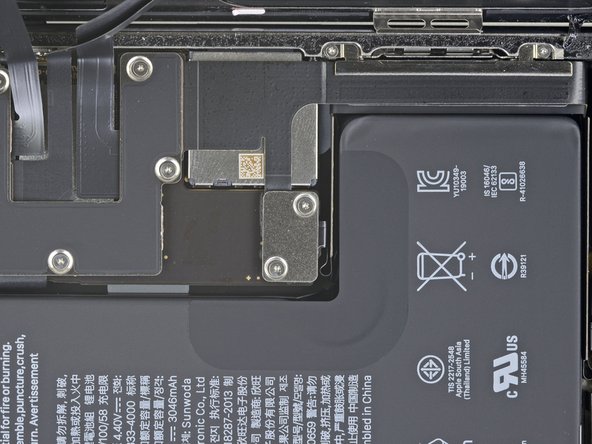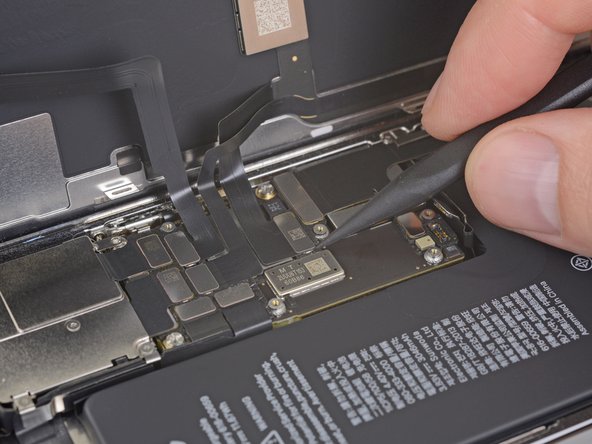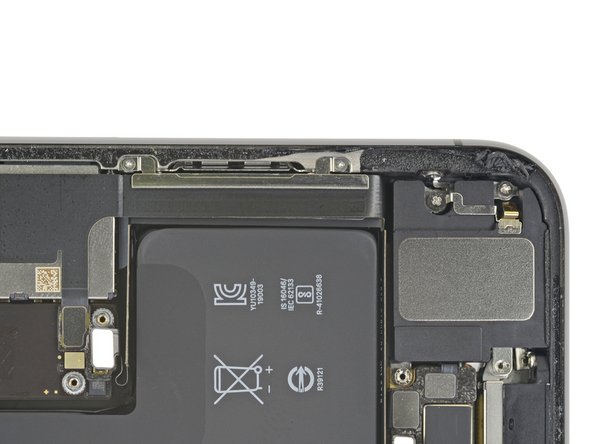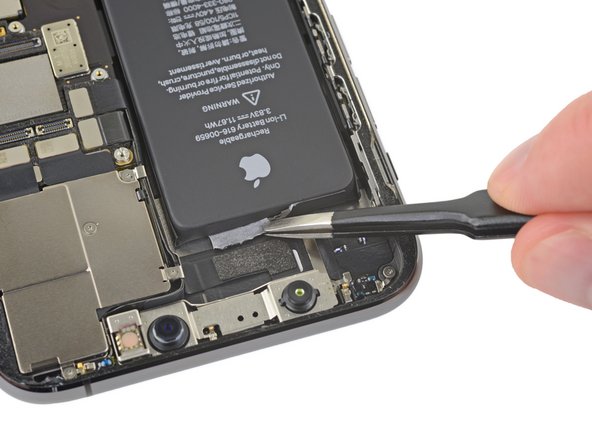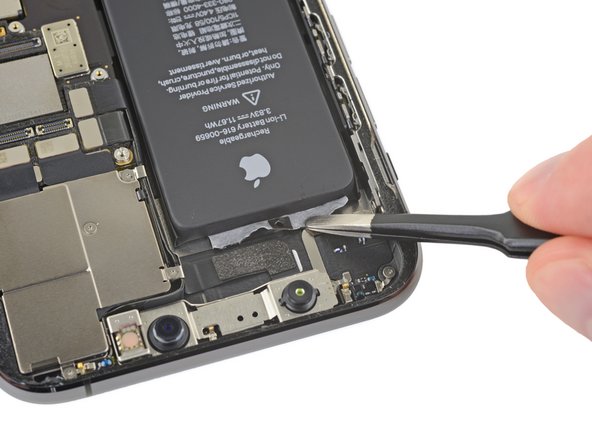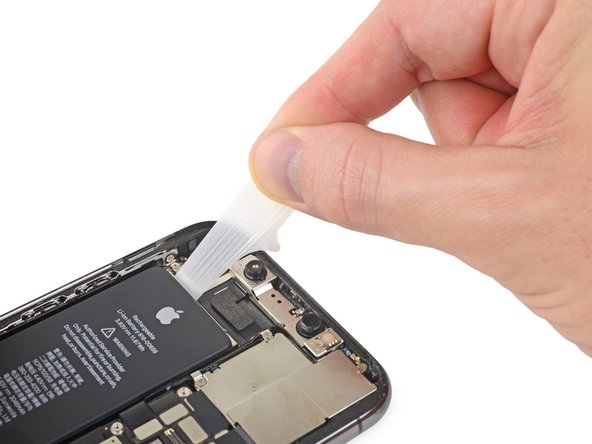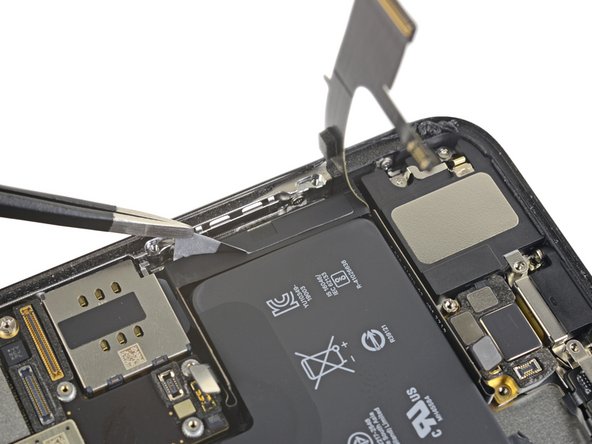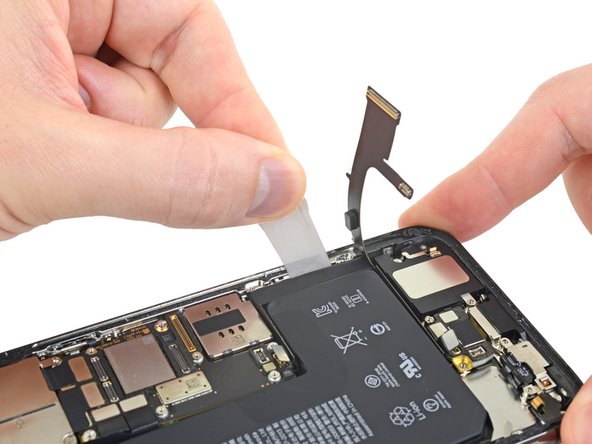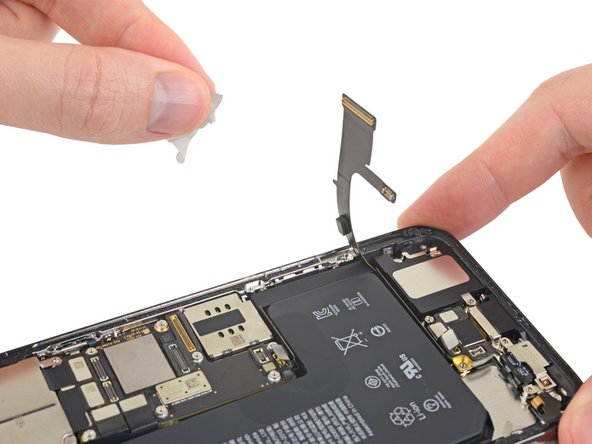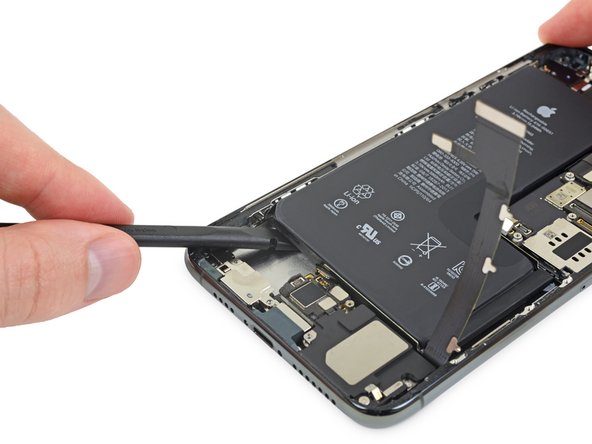iPhone 11 Pro Battery Replacement
ID: 127686
Description: iPhone batteries are rated to hold 80% of their...
Steps:
- Before you begin, discharge your iPhone battery below 25%. A charged lithium-ion battery can catch fire and/or explode if accidentally punctured.
- Power off your iPhone before beginning disassembly.
- Remove the two 6.7 mm-long pentalobe screws at the bottom edge of the iPhone.
- Opening the iPhone's display will compromise its waterproof seals. Have replacement seals ready before you proceed past this step, or take care to avoid liquid exposure if you reassemble your iPhone without replacing the seals.
- If inserted too far, an opening pick can damage your device. Follow this step to mark your pick and prevent damage.
- Measure 3 mm from the tip and mark the opening pick with a permanent marker.
- You can also mark the other corners of the pick with different measurements.
- Alternatively, tape a coin to a pick 3 mm from the tip.
- If your iPhone has a cracked screen, keep further breakage contained and prevent bodily harm during your repair by taping over the glass.
- Lay overlapping strips of clear packing tape over the iPhone's screen until the whole face is covered.
- Wear safety glasses to protect your eyes from any glass shaken free during the repair.
- If you can't get the suction cup to stick in the next few steps, fold a strong piece of tape (such as duct tape) into a handle and lift the screen with that instead.
- If all else fails, you can superglue the suction cup to the screen.
- The next three steps demonstrate the Anti-Clamp, a tool we designed to make the opening procedure easier. If you aren't using the Anti-Clamp, skip down three steps for an alternate method.
- For complete instructions on how to use the Anti-Clamp, check out this guide.
- Pull the blue handle backwards to unlock the Anti-Clamp's arms.
- Slide the arms over either the left or right edge of your iPhone.
- Position the suction cups near the bottom edge of the iPhone—one on the front, and one on the back.
- Squeeze the cups together to apply suction to the desired area.
- If you find that the surface of your iPhone is too slippery for the Anti-Clamp to hold onto, you can use tape to create a grippier surface.
- Pull the blue handle forward to lock the arms.
- Turn the handle clockwise 360 degrees or until the cups start to stretch.
- Make sure the suction cups remain aligned with each other. If they begin to slip out of alignment, loosen the suction cups slightly and realign the arms.
- Heat an iOpener and thread it through the arms of the Anti-Clamp.
- You can also use a hair dryer, heat gun, or hot plate—but extreme heat can damage the display and/or internal battery, so proceed with care.
- Fold the iOpener so it lays on the bottom edge of the iPhone.
- Wait one minute to give the adhesive a chance to release and present an opening gap.
- Insert an opening pick into the gap under the screen and the plastic bezel, not the screen itself.
- If the Anti-Clamp doesn't create a sufficient gap, apply more heat to the area and rotate the handle a quarter turn.
- Don't crank more than a quarter turn at a time, and wait one minute between turns. Let the Anti-Clamp and time do the work for you.
- Skip the next three steps.
- Heating the lower edge of the iPhone helps soften the adhesive securing the display, making it easier to open.
- Use a hairdryer or heat gun or prepare an iOpener and apply it to the lower edge of the iPhone for about a minute in order to soften up the adhesive underneath.
- If you're using a single suction handle, apply it to the bottom edge of the phone, while avoiding the curved portion of the glass.
- Pull up on the suction cup with firm, constant pressure to create a slight gap between the front panel and rear case.
- Insert an opening pick into the gap under the screen and the plastic bezel, not the screen itself.
- The watertight adhesive holding the display in place is very strong; creating this initial gap takes a significant amount of force. If you're having a hard time opening a gap, apply more heat, and gently rock the screen up and down to weaken the adhesive until you create enough of a gap to insert your tool.
- Slide the opening pick around the lower left corner and up the left edge of the iPhone, slicing through the adhesive holding the display in place.
- Don't insert your pick more than 3 mm, as you may damage internal components.
- There's a delicate cable along the right edge of your iPhone. Don't insert your pick here, as you may damage the cable.
- Re-insert your pick at the bottom edge of the iPhone, and slide it up the right side to continue separating the adhesive.
- Don't insert your pick more than 3 mm, as you may damage the display cables.
- The top edge of the display is secured with both glue and clips.
- Gently pull the right edge of the display down slightly (in the direction of the Lightning port).
- Insert your pick into the top-right corner of the phone.
- Continue pulling the display down (toward the Lightning port) as needed in order to make a gap large enough for the pick.
- Slide the pick to the top left corner and cut any remaining adhesive securing the display.
- Don't insert your pick more than 3 mm, as you may damage the front panel sensor array.
- Pull on the small nub on the suction cup to remove it from the front panel.
- Open the iPhone by swinging the display up from the left side, like the back cover of a book.
- Don't try to fully separate the display yet, as several fragile ribbon cables still connect it to the iPhone's logic board.
- Lean the display against something to keep it propped up while you're working on the phone.
- During reassembly, lay the display in position, align the clips along the top edge, and carefully press the top edge into place before snapping the rest of the display down. If it doesn't click easily into place, check the condition of the clips around the perimeter of the display and make sure they aren't bent.
- Remove two 1.3 mm long Y000 screws securing the battery cover bracket.
- Throughout this repair, keep track of each screw and make sure it goes back exactly where it came from to avoid damaging your iPhone.
- During reassembly, this is a good point to power on your iPhone and test all functions before you seal the display in place. Be sure to power your iPhone back down completely before you continue working.
- Remove the bracket.
- Use a spudger or a clean fingernail to pry the battery connector up from its socket on the logic board.
- Try not to damage the black silicone seal surrounding this and other board connections. These seals provide extra protection against water and dust intrusion.
- Bend the connector slightly away from the logic board to prevent it from accidentally making contact with the socket and providing power to the phone during your repair.
- Use a Y000 driver to remove six 1.3 mm screws securing the logic board cover bracket.
- Remove the bracket.
- Use a spudger or a fingernail to disconnect the OLED panel cable connector.
- To re-attach press connectors like this one, carefully align and press down on one side until it clicks into place, then repeat on the other side. Do not press down on the middle. If the connector is misaligned, the pins can bend, causing permanent damage.
- Use a spudger or a fingernail to disconnect the front sensor assembly cable connector.
- Use a spudger or a fingernail to disconnect the digitizer cable connector.
- If any part of your screen doesn't respond to touch after your repair, disconnect the battery and then re-seat this connector, making sure it clicks fully into place and that there's no dust or other obstruction in the socket.
- Remove the display assembly.
- During reassembly, pause here if you wish to replace the waterproof adhesive around the edges of the display.
- Use a Y000 driver to remove the four 1.5 mm screws securing the lower battery connector cover.
- Remove the lower battery connector cover.
- Use a spudger to disconnect the lower battery flex cable by prying it straight up from its socket.
- Use a spudger to disconnect the Taptic Engine flex cable by prying it straight up from its socket.
- Remove the three screws securing the Taptic Engine:
- One 1.9 mm-long Y000 screw
- One 1.4 mm-long Y000 screw
- One 4.1 mm-long standoff screw
- Standoff screws are best removed using a standoff screwdriver or bit.
- In a pinch, a small flathead screwdriver will do the job—but use extra caution to ensure it doesn't slip and damage surrounding components.
- Remove the Taptic Engine.
- Use a Y000 driver to remove the two 1.4 mm screws securing the Lightning flex cable bracket.
- Remove the flex cable bracket.
- Pry up to disconnect both of the Lightning flex cable connectors from the Logic board.
- Gently lift the Lightning flex cable and bend it slightly toward the bottom edge of the iPhone for better access to the battery underneath.
- The battery is secured to the rear case with three pieces of stretch-release adhesive—one near the bottom edge of the battery, one near the top, and one on the right.
- Each piece of adhesive has one or two black pull-tabs at the end, which are lightly adhered to the side edges of the battery.
- In the following steps, you'll pull each tab to slowly stretch out the adhesive underneath the battery. These "command-strip" style adhesives lose their stick when stretched, so you can remove the battery with ease.
- If the strips break, don't panic! They don't always work as intended. Keep reading for tips on removing broken strips.
- Peel down the first battery adhesive pull-tab to un-stick it from the bottom edge of the battery.
- Don't jab the battery with any sharp tools. A punctured battery may leak dangerous chemicals or catch fire.
- Grab the pull tab with your fingers and slowly pull it away from the battery, toward the bottom of the iPhone.
- Pull hard enough to maintain tension on the strip, but don't force it. Give it plenty of time to stretch and un-stick from under the battery.
- Don't press down on the battery. Hold the iPhone firmly by its sides.
- Keep the strip flat and unwrinkled. Try to pull evenly on the whole strip, rather than pulling mainly in the middle or on one side.
- Pull at a low angle so the strip doesn't snag on the edge of the battery.
- If the adhesive strip breaks off, try to retrieve it using your fingers or blunt tweezers, and continue pulling—but do not pry under the battery.
- If any of the adhesive strips break off underneath the battery and can't be retrieved, try to remove the other strips, and then proceed as instructed below.
- The top pull tabs lie very close to the Face ID sensors. If damaged, Face ID can only be repaired by Apple, so work with care. Don't touch the lenses with your fingers.
- Peel down the battery adhesive pull tabs to un-stick them from the top edge of the battery.
- Grab both pull tabs at the same time, and slowly pull to stretch the adhesive away from the battery, toward the top of the iPhone.
- Follow the same procedure as with the previous strip: don't press down on the battery, keep the strip flat and unwrinkled, and pull at a low angle.
- If the adhesive strip breaks off, try to retrieve it using your fingers or blunt tweezers, and continue pulling—but do not pry under the battery.
- If the adhesive breaks off underneath the battery and can't be retrieved, continue with the next step.
- Peel up the two remaining battery adhesive pull-tabs to un-stick them from the right edge of the battery.
- Using the same procedure as before, pull both tabs at the same time to stretch and remove the remaining adhesive strip holding the battery in place. Try not to snag the adhesive on the edge of the iPhone.
- Be careful not to fling the battery from the iPhone as the final adhesive strip comes out.
- If you removed all the adhesive strips successfully, skip the next step.
- Otherwise, continue with the next step below.
- If you're still having trouble removing the battery, apply a few drops of high concentration (over 90%) isopropyl alcohol under the edge of the battery in the area of the broken adhesive strip(s).
- Wait about one minute for the alcohol solution to weaken the adhesive.
- Use the flat end of a spudger to gently lift the battery.
- Don't try to forcefully lever the battery out. If needed, apply a few more drops of alcohol to further weaken the adhesive. Never deform or puncture the battery with your pry tool.
- Remove the battery.
- If there's any alcohol solution remaining in the phone, carefully wipe it off or allow it to air dry before installing your new battery.
- Before you adhere the replacement battery, temporarily reconnect the battery connector to the motherboard socket. This ensures that the battery is properly aligned in its recess.
- Adhere the battery, disconnect it, and continue reassembling your device.
- If your new battery didn't come with adhesive preinstalled, refer to this guide for help replacing the adhesive strips.
- Perform a force restart after reassembly. This can prevent several issues and simplify troubleshooting.








































